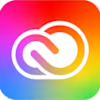
Startup UX Kickstart Bundle (Idea to MVP)
Starting at
$
4,400
/wkAbout this service
Summary
FAQs
How long will it take to complete this bundle?
The Startup UX Kickstart Bundle typically takes 6-8 weeks to complete. This timeline includes idea validation, wireframing, prototyping, and usability testing. However, we can adjust the timeline depending on the complexity of your product and specific requirements.
Why should I invest in UX before I’ve even built my product?
Investing in UX early helps you build a product fast but on solid design foundation that will result in reducing churn, enhancing user retention, and ensuring a scalable product, this investment could save you $125,000 to $260,000 or more in potential losses.
What tools do you use, and will I have access to the design files?
I typically use design and prototyping tools like Figma, Protopie to create wireframes and prototypes. At the end of the project, you’ll receive all design files, including the final interactive prototype, wireframes, and any documentation needed for your development team to proceed.
Can this bundle be customized to my specific needs?
Absolutely! While the bundle is designed to be comprehensive, I can tailor it to meet your specific requirements. Whether you need additional research, extra usability testing, or a more focused scope for your MVP, we’ll work together to create a process that aligns with your goals and timeline.
What kind of ROI can I expect from investing in this UX bundle?
1. Faster time-to-market: You’ll get a validated, user-friendly MVP in a shorter time frame, which can help secure early adopters or investors. 2. Cost savings: Avoiding costly development changes by addressing usability issues before coding begins. 3. Higher chances of securing funding: A polished, well-designed prototype backed by user research is more appealing to investors. 4. Improved product-market fit: Early user feedback ensures you’re building a product that solves real user problems, increasing the chances of long-term success.
How will this bundle help me pitch to investors?
The Startup UX Kickstart Bundle gives you a user-tested, high-fidelity prototype that demonstrates the value of your product. You’ll also have documentation that outlines the UX research, personas, and user flows behind the design. This helps investors see that your product is solving real user problems, is well-researched, and is ready for development—giving them confidence in your product and team.
What's included
Competitor Analysis
A detailed report that evaluates competitors in the space, their product features, strengths, weaknesses, and gaps your product can fill.
User Personas & Journey Maps
Creation of user personas based on target market research, identifying key user segments, pain points, goals, and behaviors. Visualized user journey maps that depict how target users interact with the product concept, highlighting their motivations, pain points, and opportunities for improvement.
Problem-Solution Fit Report
A document summarizing the core user problems your product will address, along with solutions validated through user research.
Finalized MVP features + Screens list
After delivering the report, having a connect with stakeholders to freeze the number of features & screens that might take to complete the targeted MVP.
Information Architecture (IA)
An outline of the structure and organization of the product (website or app), showing how content and features are arranged for intuitive navigation.
Wireframes
Low-fidelity wireframes for key product screens, illustrating the basic layout and functionality without detailed visual design. These wireframes can focus on: Home screen/dashboard Core features or interaction points Navigation menus Call-to-action buttons and user flows
Clickable Prototype (Low-Fidelity)
An interactive, clickable prototype that simulates how users will navigate the product. This is typically done using tools like Figma focuses on demonstrating user flows and interactions without polished visuals.
MVP Definition Document
A clear outline that defines the core features to be included in the MVP, focusing on delivering the most critical functionality to test with users. This document aligns the team on priorities for the initial launch.
High-Fidelity MVP Prototype
A polished, high-fidelity prototype that closely resembles the final product. It includes detailed visual design, user interactions, and core functionality. Design for 5-7 key screens that capture the essence of the product’s MVP version (e.g., homepage, signup flow, dashboard, core feature screens). Incorporation of branding, color schemes, typography, and visual elements that align with the startup’s identity.
Usability Testing Plan
A structured plan outlining how usability testing will be conducted, including: Test objectives Scenarios and tasks users will complete Metrics to measure (e.g., task completion rate, time on task, user satisfaction)
Usability Testing Results Report
fter conducting usability tests with real users, this report will summarize: Key findings from user feedback Pain points identified during the test Suggested design improvements and next steps to enhance the product
Post-Launch Support Plan (Optional Add-on)
Growth-Oriented UX Strategy Document: A roadmap for the startup to follow as they evolve the product, outlining how to prioritize future features based on user needs and feedback.
Recommendations
(5.0)

Client • Oct 23, 2024
Recommended
Pooja is an absolute delight. She is so intelligent, so thoughtful, and so talented. When presented with business problems, she asks such insightful questions to begin breaking down the human experience to fully understand the space. It's been so refreshing witnessing her turn huge challenges into bite-sized pieces so that they can be solved more easily. Her output is unbelievably high quality - and she does it so FAST! Pooja is really just a phenomenal person to solve problems with.


Client • Oct 23, 2024
Recommended
What impressed me the most was that Pooja not only shaped our MVP with precision aligning it with my vision but also went above and beyond in delivering comprehensive strategy & app positioning. As a gesture of goodwill, they even prepared our investor pitch which impressed everyone involved. I highly recommend Pooja for their expertise, leadership, and dedication.

Client • Oct 23, 2024
Recommended
Pooja is so much fun to work with! She’s that pair of lenses to the product that I never knew I needed, and now that I do, I’m so glad I know who to approach. Her strategy workshop was insightful—I learned so much about product thinking, and she made it all feel easy and engaging. Plus, the competitive landscape report and data analysis she provided are resources I keep coming back to. Pooja is the safe hands every product needs, and I can’t wait to work with her on the MVP. Highly recommend!

Client • Oct 23, 2024
Recommended
I started as Pooja’s mentor, and we soon collaborated on projects. She’s incredibly proactive and dedicated—work is always a fun challenge for her. Pooja dives deep into data, adapts her approach as needed, and isn’t bound by strict frameworks, which makes her work feel human and unique. She’s a no-fluff designer, easy to work with for both clients and teams. I highly recommend Pooja for any UX projects, she will not disappoint.


Client • Oct 21, 2024
Recommended
I highly recommend Pooja as a UX designer. She has a strong ability to understand business needs and translate them into effective design solutions. Pooja played a pivotal role in our AI projects, which were complex, improving conversion rates, revenue, and market reach. With a keen eye for detail and a user-centric approach, she consistently delivered outstanding designs. Pooja is a great team player and will be an invaluable asset to any organization, making a meaningful impact on success.


Client • Oct 17, 2024
Recommended
As a UI designer, I really appreciated how Pooja made collaboration seamless. She included me in workshops early on and provided detailed handoffs with documentation and Loom videos, allowing me to focus purely on UI without worrying about UX complexities. It kept the whole team aligned. Beyond her skills, Pooja’s fun to work with, always upskilling and keeping things inspiring.



